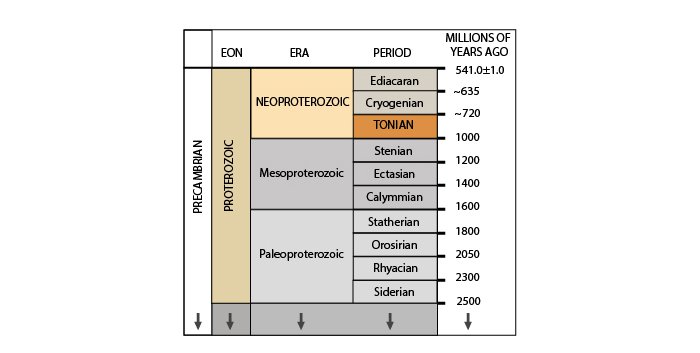
May 8, 2018
Research Highlight
Pinning Down the Rise of Multicellular Cyanobacteria

The Tonian Period is the earliest of the Neoproterozoic Era and lasted from approximately 1 billion to 720 million years ago. The Tonian occurred between the Stenian Period of the Mesoproterozoic Era, and the Cryogenian Period of the Neoproterozoic Era.Image credit: NASA Astrobiology.
New fossil discoveries are helping astrobiologists better constrain the timing of the rise of complex multicellularity in cyanobacteria. Researchers uncovered fossils from an akinete-bearing filamentous canobacterium from the Tonian Period (roughly 1000 to 720 million years ago (Ma)). The team believes that the organisms were among those that composed benthic microbial mats.
Cyanobacteria have played a major role in the evolution of Earth’s biosphere. For much of the planet’s history, these tiny organisms are thought to have been the only source of biogenic oxygen, and they also played an important role in the fixation of carbon and nitrogen. It is thought that cyanobacteria were key to the rise of oxygen in Earth’s atmosphere, which brought about conditions favorable for the rise of complex life.
Many cyanobacteria are single cells, but one clade (known as subsections IV+V) is multicellular and has cell differentiation. Estimates for when this clade evolved have ranged from ~2000 Ma to ~500 Ma. The newly discovered fossils will help provide a minimum age for the divergence of this important subsection of cyanobacteria.
The study, “Nitrogen-Fixing Heterocystous Cyanobacteria in the Tonian Period,” was published in the journal Current Biology. The work was supported by NASA Astrobiology through the Exobiology Program.